This is what I read the first time I opened my custom-made, long-awaited journal. I hadn’t requested that though. The creator of the journal took it upon themselves to surprise me with a custom-made label that specifically stated this was my journal.

I admit it was quite awesome.
Even though I’m a marketer and understand how this works, it still felt amazing to hold a journal with my name on it. It was also filled with other nice things (like the quote you see above) so I keep using it year after year.
I have ordered other times from this particular business and they’ve often surprised me with something small. I realise this feeling of happiness and satisfaction when I open their package is a huge contributor of why I keep buying from them.
If you are a believer in statistics though and not in anecdotal stories, I got those for you too.
According to an Epsilon study, a whopping 80% of buyers are more likely to buy products from online retailers that offer a personalised shopping experience.
That’s a remarkable difference in numbers.
Furthermore, Forbes released a fascinating article in 2020 showing us the power of personalisation. It contains some staggering statistics directly connecting personalisation to increased revenue for online stores. For example, 50% of consumers will check for related suggestions, and 84% (!) say that making them feel like a person, not a number, is crucial to winning their business.

Of course, personalisation isn’t a new concept to online store owners. If you have an eCommerce website, it’s highly unlikely you don’t already have some sort of personalisation added (like the related suggestions in question).
What’s important, though, is to understand the dynamics of personalisation, its quintessence so that you can actually apply it to your business.
Why does a personalised approach dramatically boost sales?
The psychological reason behind all this is the perceived special treatment that comes with personalisation. Special treatments make people feel special as well; in fact, a major component of luxury brands isn’t the merch/service value itself but the attitude that comes with it.Don’t believe me?
Check out this article and prepare to have your mind blown with how brands treat their big spenders - from free airline tickets to private events unavailable to the public.
If you think their approach isn’t quite suitable for you because it’s too expensive, I would argue otherwise. People fear the marketing budget that would go into such things, but the reality is you don’t need to break the bank. You need mostly consideration.
I call it “The Limoncello Principle”

Years ago, I used to live in Italy. I love Italian cuisine and frequently go to restaurants to enjoy the deliciousness of its simplicity and taste. If you’ve been to authentic Italian restaurants often enough, you’ll know that at the end of your meal, you’ll often get a complimentary limoncello. This is especially true if you get friendly with the staff or the owner, but it may happen either way.
More often than not, you’ll get the limoncello shot, and the staff/owner will also stop to chat for a moment or two.
It’s a tradition, and although no Italian would be surprised by it, it’s a ritual that is still highly appreciated by locals.
They always enjoy it, and even though the restaurant owner probably served the limoncello (and chatted) to 20 other people that same night - it still has the power to make them feel special.
And right there, when I wasn’t even working in marketing yet, I got one of my very first marketing lessons.
Making people feel special can beat almost anything else.
It’s not just about the “free” thing; it’s a combination of factors. Yes, you get something small for free but you also get that special treatment where someone stops and notices you, regards you, tells you that they appreciate the business you’re bringing in.
In other words, something that makes you feel like those 84% of consumers would like to feel: like a person, not a number. Like a very special person.
How is this relevant to eCommerce stores?
Obviously, as an eCommerce store owner, you cannot interact with your customers in the same way the restaurant owner does, since you have no direct contact with them. The good thing is that the personalised shopping experience works the same way as the interaction in our example above.The limoncello principle would require that you create a combination of things to make the customer feel recognised and appreciated. The small things you may implement in your online store will also make them feel special (and oftentimes help them make the best decisions for themselves when shopping).
From greeting messages and tailored product recommendations to email marketing segmentation, you can increase your revenue dramatically by applying changes that usually require more thinking than money.
Today, we’ll look into some actionable steps you can take to implement the limoncello principle to your online store and personalise your customers' shopping experience as much as possible.
Important note: I will not be recommending specific software or companies in this article since this would make it excruciatingly long. However, if you wonder what to use and want a recommendation, I would happily provide one! Leave us a comment or contact us via chat/social media, and I’ll make sure to get in touch.
1. Encourage Account Creation by Incentivising
Let’s start with the basics. To provide a personalised shopping experience, you need to collect information about the people who use your online store. Data collection is typically the first step to creating a personalised shopping experience.While you can review traffic logs to identify some forms of personalised data - demographics, device type, geographic location, products viewed, etc. - it's not enough for a truly personalised shopping experience.
Encouraging consumers to create an account will provide you with a wealth of data.
You can identify the name, gender, and age of a consumer if they create an account and things like shopping preferences, lifetime value, etc. This is essential data as almost any personalisation depends on it.
Unfortunately, many customers get annoyed if they are forced to create an account - the lack of guest checkout is within the top 3 reasons shoppers abandon cart.
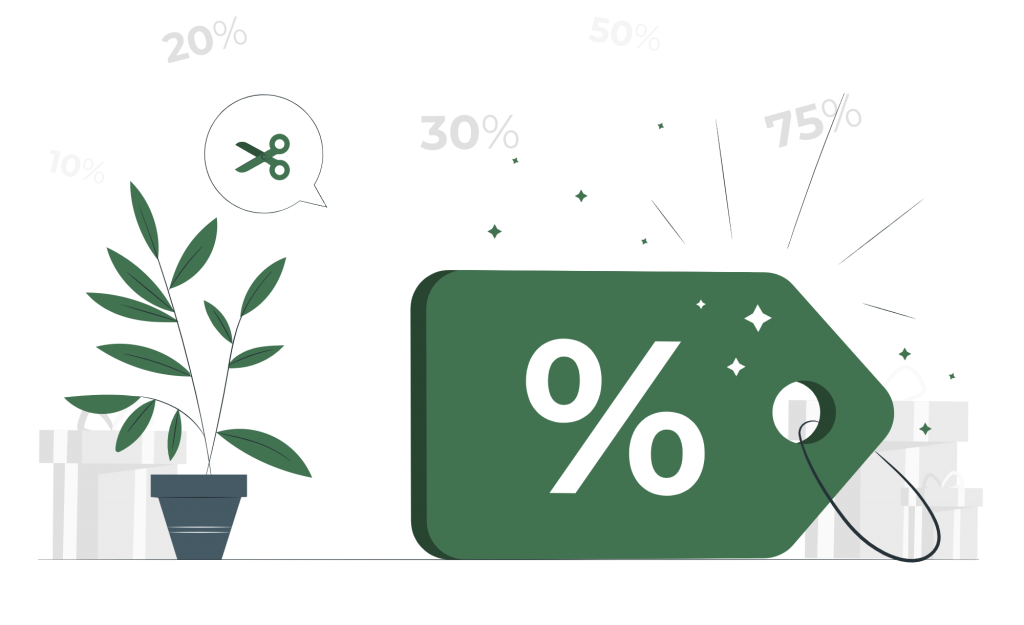
So what can you do?
The trick is to encourage account creation, not force it.
Offer incentives for them alongside your guest checkout option. Coupons, free items, exclusive events for registered users - the sky's the limit. All you need to do is sweeten the pot just enough for them to overcome the annoyance of filling in the form.
2. Personalise Your Home Page
An effortless way to create a personalised shopping experience is to greet returning customers by name.Yes, it seems rather obvious but remember - it’s not one thing, but the combination of factors. Every little action counts, and also, being recognised is a big contributor to that feeling “like a person”
It’s not a coincidence that this is a personalised tactic deployed by some of the biggest eCommerce stores, including Amazon. If you are logged in to your Amazon account, you'll see a greeting message featuring your first name in the top-right corner.

The other thing you can personalise for them is the content; if they are returning visitors, use that data and display categories and products dynamically relevant to them. Some eCommerce platforms will require coding to do that while others may offer ready-made solutions such as plugins or extensions (WordPress and Magento being among them).
RELATED ARTICLE: Best Shopify alternatives for 2022 [Pros&Cons]
3. Show Geographically Relevant Product Information
Geographic data is nothing new, but people usually think about language or currency when offering a country-specific shopping experience. One of the most important things to a shopper - the product information - is often disregarded.Product information isn't universal. Depending on the geographic region, it may vary significantly, confusing or upsetting your international visitors.
Shoe sizes, for instance, are different in the United Kingdom than in the United States. A size 6 in the United States is the equivalent of a 5.5 in the United Kingdom.
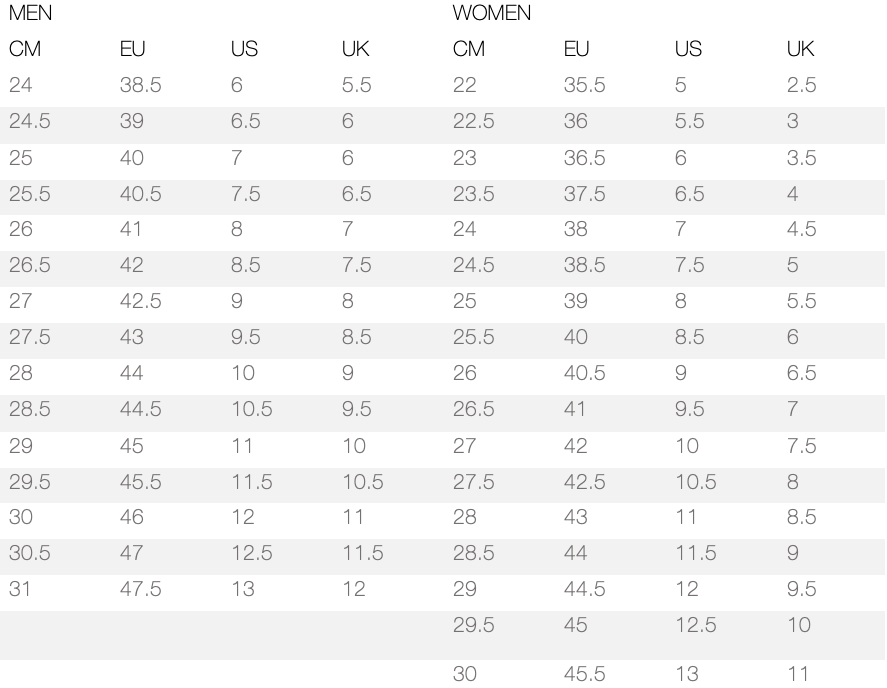
The same goes for clothing sizes that may vary even more between Europe, the UK, USA and the rest of the world. Availability also may be an issue if you trade on sensitive merchandise such as supplements or cosmetics and have to meet local regulations.
Make sure you consider this if you sell internationally and try to adjust your product descriptions accordingly. This is especially critical for sizing, which can be a big friction point for your potential buyers.
4. Offer AI Product Recommendations (Based on Browing History)
We often don’t realise what level of knowledge other people have and therefore have a hard time putting ourselves in their shoes. This is known as a cognitive bias called “the curse of knowledge” in psychology. The way this is relevant to eCommerce is the realisation that many customers might not even know about a specific product, even though, as a store owner, you do, but you forget to pave the road towards it.And so here comes product recommendations based on consumers' browsing history.
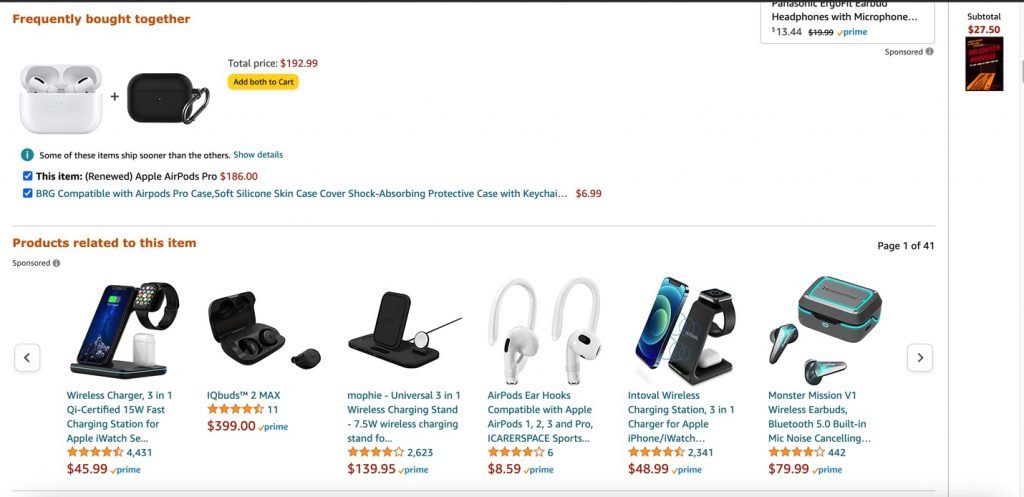
The way this works is the more a visitor browses your website, the more the respective algorithm (of a plugin or a SaaS service) would acquire knowledge on what they are searching for and therefore be able to make recommendations.
This approach is great for product discovery, and depending on the service you are using, the AI recommendations can give you unbeatable product exposure.
5. Offer a Personalised Shopping Guide
Another fantastic option for product discovery are shopping guides.Shopping guides (also called assistants) work much like a filter, however, they provide a more interactive experience. They are usually shaped as quizzes, and I absolutely love them as a buyer.
First of all, they are pretty fun. The fun factor is not to be underestimated, as online competition can be downright savage, so you need all the armoury you can gather.
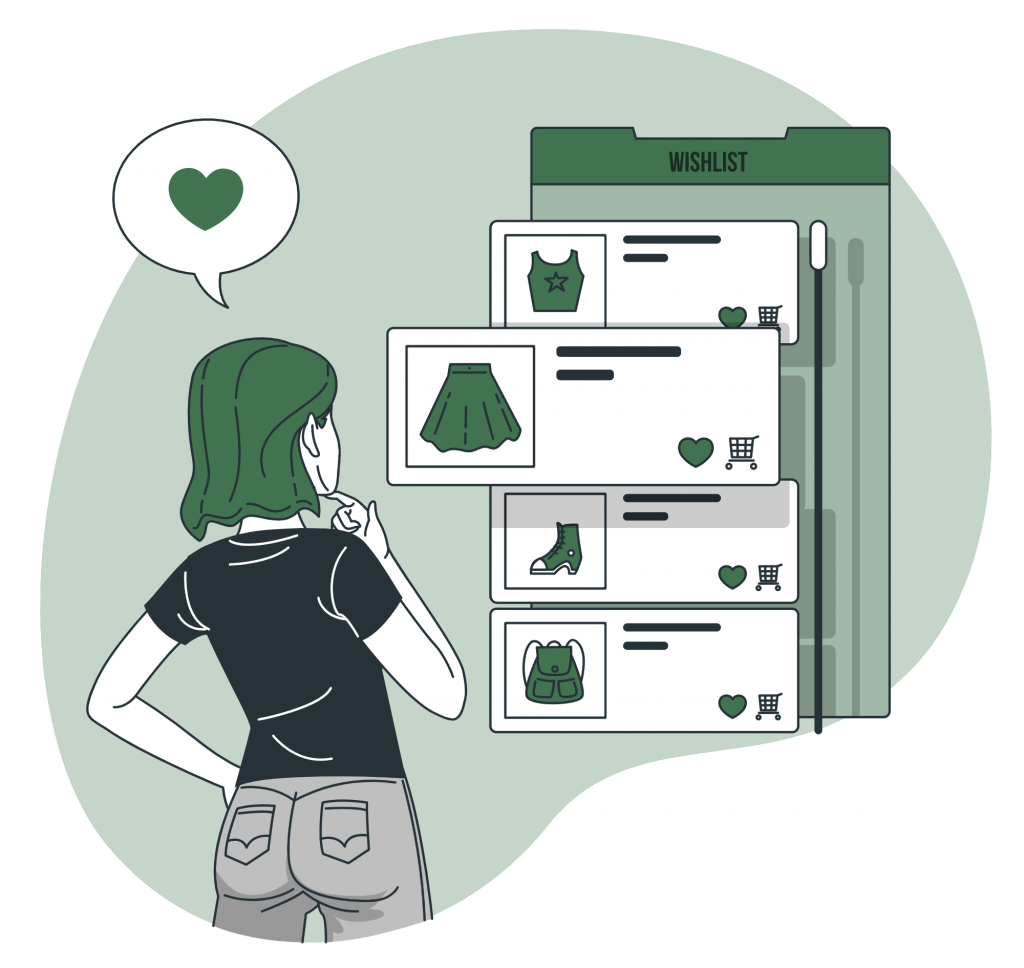
Like product recommendations, guides also help me discover new products. This can be invaluable for shoppers who hate spending a lot of time on research and just want to tell you what they need so yu can provide it.
Thirdly, unlike product recommendations, I can specify the exact set of criteria I want to be applied on my search (again, like a filter). This is useful for obvious reasons but especially important in terms of budget and availability. It’s really annoying to get a product recommended and then discover you cannot actually buy it from your location.
It’s also worth noting that guides are a great place to use your brand voice. You have enough space to introduce your company better so use it!
Make it funny, make it reliable, memorable, and whatever else you want, but also make sure not to lose its focus, which is to provide your customer with the best possible match for their search.
6. Show Recently Viewed Products
In addition to product recommendations, you can show recently viewed products as part of your eCommerce store's personalised shopping experience. Recently viewed products, of course, are those that consumers have viewed in the past.They aren't product recommendations based on consumers' browsing history, but the viewed items (i.e. a mirror reflection of their browsing history).
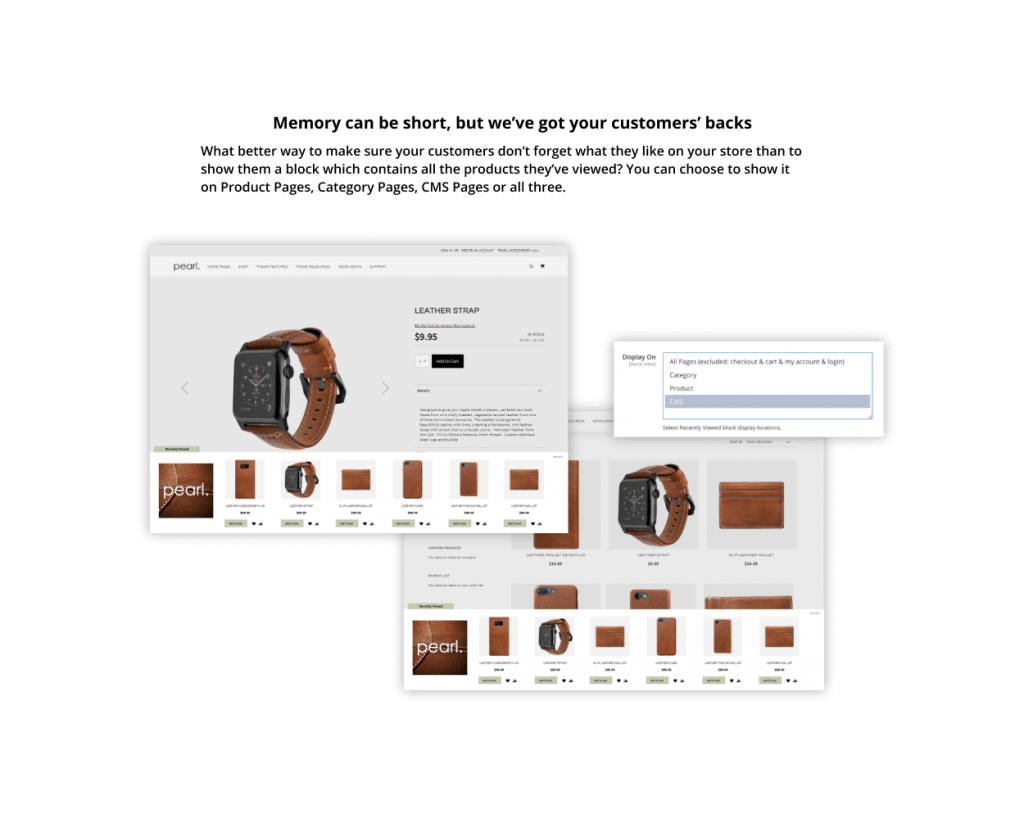
Most consumers don't purchase the first product they come across. They may view a half-dozen or more products before making a purchase.
Showing recently viewed products will create a trail that consumers can follow. Even if a consumer doesn't remember the name of the product they viewed, they can find it and of course, it works as a retargeting device too.
This works amazingly well via email marketing, which, as we know, is one of the channels with the best engagement rat
7. Embrace Email Personalization
Another way to create a personalised shopping experience is to use email. As we noted above, you can send emails to consumers that feature personal and relevant information in them.Such emails could include their recently viewed (but not purchased) products or product recommendations (again, based on their browsing history). Cross-selling based on recent purchases is a great option and so is trying to make them a repeat customer by using all of the above data at your disposal.
Of course, use of their names is mandatory. Whether you choose to use it in the subject, in the email both or in both places, this is something you absolutely cannot miss. Netflix are great into personalising their emails, including using many of the suggestions we talked about like AI recommmendations and recently viewed (shows)

You can additionally tweak your email by adding a personal touch on your side.
Your email will feel much more personal if you sign it and insert a name within the “from” field (e.g. Marina from Kualo) - at the end of the day, it is you who actually writes the email. Introduce yourself!
Also, when you write to your customers, keep in mind it’s a conversation, not a bot-like sales pitch, for example:
“I’ve noticed you looked into our XXX natural cosmetic line. Did you know that the YYY also offers natural skincare? Check it out here.”
Instead of:
“You have recently viewed XXX product; perhaps you would be interested in YYY”
8. Send Personalised Push Notifications
Obviously, push notifications are to be used moderately due to their intrusive nature. The key here is to make it all about the value for the visitor (and not yourself).People find them annoying because far too often they don’t see enough value in them. What you need to do is put yourself in your customers’ shoes; would you be happy to see your notification? Is what you offer worth the intrusion? Whether you want to collect their email or cross-sell/upsell, you need to make sure the offer is good enough to compensate for the intrusion.
Personalised push notifications would be of greater value than the regular once since they may feature things you know your customers want i.e. product recommendations based on their preference.
It’s important to know that there are two types of push notifications: web push and mobile push. Web push notifications do not work on iOS so it’s something you should have in mind when approaching this subject.
Final Thoughts
If your eCommerce store isn't living up to its full potential, the Limoncello principle may be the answer.A personalised shopping experience will result in more sales, fewer abandoned carts and increased customer loyalty. Best of all, it will create a long-lasting feeling of satisfaction in your customers, as they get to enjoy the feeling of being special.
As always, test and research, keep an eye on your results and if you have the time, grab a dish of pasta in your local Italian restaurant and have a limoncello with the owner.
You will enjoy it, I promise.



